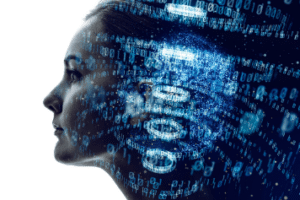June 8, 2020

By Dave McCaughan
2020, the year everything we thought was going to happen just sped up. As I was dithering around getting ready to write this piece I was reading the World Economic Forum’ “spotlight on precision medicine” update, which basically is yet another reminder that an awful lot of the result of the COVID saga has been a speeding up of automated and digitally based health advisory and analysis tool use. Circumstance breeds opportunity and for the digital consumer space, this is a year we had expected to see a jump in the way people, business, media and government exchanged data and used new applications. It has just taken off in ways we had not predicted.
The trend business is a flawed one, of course. People predict what will happen and if they are lucky get it close to right, and if not can blame “unexpected circumstance” for deviations.
I was in a conversation with Steve Sowerby of XPotential and The Consumer Healthcare Training Academy just the other day, where we were discussing how things we might have predicted for 2025 are happening now. COVID makes the future happen now.
The new normal is less a ‘massive change’ but rather many things we have been “predicting” for a decade or more becoming reality. Social distancing means we turn to screens more for virtual companionship. Health concern means we use more self-monitoring. We can’t go out so we bring the “out” in with more e-commerce.
Digital Purchasing
“ The come to me economy” we have seen grow in the last decade with greater pizza delivery and the expansion of Amazon explodes as more and more people buy in to getting more and more things delivered and then pay for it with increasing use of contactless payments. It’s not that this is new, but what is different is that for a couple of billion people around the world, whatever your level of digital integration in your daily life has stepped up a couple of levels. Those that were already heavy digital shoppers, have in the last few months, had that lifestyle substantiated as normal. For the novice, it is now more normal. For many first timers, the experience will be hard to shake. The merging of offline/online shopping gets more blurred and more about the screen as the “first option”. We talk about looking forward to going “back to the shops” but for massively increased numbers that will be more window shopping and a chance to socialize in person, while buying will be via the screen of choice.
And when we do buy, it is now increasingly contactless digital payments. The credit/debit/bank/loyalty card business has been pushing the idea of “faster, easier, freer payment systems” for over two decades. The idea of digital payments via your phone, tap and go, paypal etc are all old ideas that have been pushed up through the gears this year to whole new levels of acceptance.
As we go, the use of digital tracking has now become more widely accepted. Sure, it is hotly debated in some countries, more than others, but for ideas of public health, personal security, disease control or just “I don’t have a choice if I want to get that train, go into that store, eat at this restaurant” tapping a QR code on entry, or knowing the GPS tracker on your phone is allowed to follow you everywhere has been accepted in ways we might have thought were a decade away way back in 2019.
Digital Neighbours
Of course, all this digital sharing has also brought us together in ways we could not have imagined. On Facebook, and other platforms, sharing “my bedroom window view” and other memes open up lives in a sense of “let’s get through this together”. The massive revival of “balcony culture” is a great example of the way digital connectivity has crossed over and returned us to a deeper appreciation of our physical neighbours. All those millions of posts of appreciating the ‘would be opera singer’ on the balcony next door, the guy running a marathon on the balcony in France, sharing the ‘block clapping’ for health workers or joining in a heartfelt singalong, takes us back decades to when sitting on the balcony or front stoop in the evening and swapping gossip was normal … but as with all things digital, now we do it all bigger and without geography bounds.
Working from Home (WFH)
If there is one area that has sped up more than any other it is maybe WFH. Over a century ago, Jules Verne and others assumed we would now be working from home, maybe doing 3-4 hours of work a day, all through some integrated, mechanical knowledge system. In 2019 any decent “futurist” knew it was coming but used the “in five years or so” gap to allow things to change. Come COVID and suddenly 2 billion white collar workers are thrown into a massive experiment and, wow !!
Zoom becomes the biggest rival to the grounded airlines of the world. The conference and meeting market is shattered as we figure out in only a few months how to make “webinars” normal ( and maybe too many of them), virtual conferences can be interesting, fun and functional, regular work can be done from anywhere. Yes, many offices will return to “brick and mortar” locations but an awful lot of managers will be looking at things like leasing costs and considering a permanent change in how to manage their staff. Not new ideas but again massively sped up by circumstance.
For the worker, of course, the digital working environment has its ups and downs. Five months ago, as WFH became a necessity the “upside” of more time to fill and less time in commutes was a hot topic. Then the need to do things at home, where we had normally out-sourced like eating in cafes and working out in gyms were quickly filled in with … more digital life. Home schooling fills in a lot of time with duties many parents would rather have avoided but quickly we found that systems adapted to that new normal as well. Meanwhile, a raft of new social, digital heroes helped us get through life with daily doses of help and advice ( thanks Joe Wick).
We may not like all these changes, and I am sure like me many niggle about some of it. BUT in reality it is now reality.
Health and Wellness Apps
A few years ago we saw the surge in step counters ( the myth of the 10,000 steps a day for good health ) and maybe more sophisticated wristbands and other wearables. For many, though, a fashion that was quickly forgotten. In 2020, measurement goes in to overdrive. Again, at whatever level you might have started from. The non-exerciser takes up a daily routine in the bedroom with a downloaded session from YouTube. The casual runner figures out a way to use an app to make sure they are at least getting a set number of “heartbeat minutes” in every day. The heavy user of health apps ups their anti. The idea of constant self-checking is now possible in ways we were “ifing and butting” about last year.
E-Medicine
E-medicine services have now become a necessity. Well maybe not quite but for many. In the UK, you can’t visit a GP without jumping online, you have to use a zoom like connection to get your 15 minutes of advice. In Bangladesh, where there are just not enough doctors anyway, digital checkup services are taking off. At the high end, you can download blood pressure apps and balance testers. The number of apps that measure the nutritional value of everything you consume by photos is exploding. Companies like Nestle, that were exploring these apps to supply supplements to the aged and other outlier consumer markets now look at these as tools for the mass.
And then there is what is to come.
In most trend predictor presentations of 2019, the three BIG things that were going to impact the world in 2020 was the environment, the Olympics and 5G. The environment/sustainability debate and the need to reconsider simple things like water usage in a world of water shortage may have been on the backburner the last six months but won’t go away. And as people use their screens to shop, vet, consider and buy more, expect more and more emphasis around brands and services and health and wellness, all being integrated with messages about sustainability. Brands having to have “water tracking” apps allow people to understand the impact of what they buy on personal and collective health, and this will be just a starting point.
All things health has been heightened by COVID, all access to information about health have been raised and if the digital age has taught us one thing, it is that we don’t cut down on data and information, we just keep accessing more. So, the business winners will be those who make information easier to sort out, easier to make use of and easier to be put in context.
5G
And that brings us to 5G. 2020 was supposed to be “the year of 5G” when we would see a huge leap in the applications we could get on our mobile devices. The year AR or VR or something like that would finally break its limitations and become normal services on our smartphones. A lot of that was going to be entertainment. The Olympics was going to be the big sporting event of the year but in reality, the winner has been e-sports. All those hours sitting on couches has meant e-sports have exploded again. And that will only explode again with 5G. But imagine what the possibilities for health and wellness will also be as we access more 5G services … holistic representation and presentation of any health issue, 3D gamification of exercise, wellness treatments, impacts of activities on body parts, doctor investigation and interpretation of complaints.
2020 the year of digital “speeding up” of use and acceptance. Expect whatever you thought to be a ‘maybe in five years’ be a reality this year … then stretch your imagination again.
Dave McCaughan Storyteller@Bibliosexual and Senior Associate at XPotential and The Consumer Healthcare Training Academy
https://bibliosexual.weebly.com/
